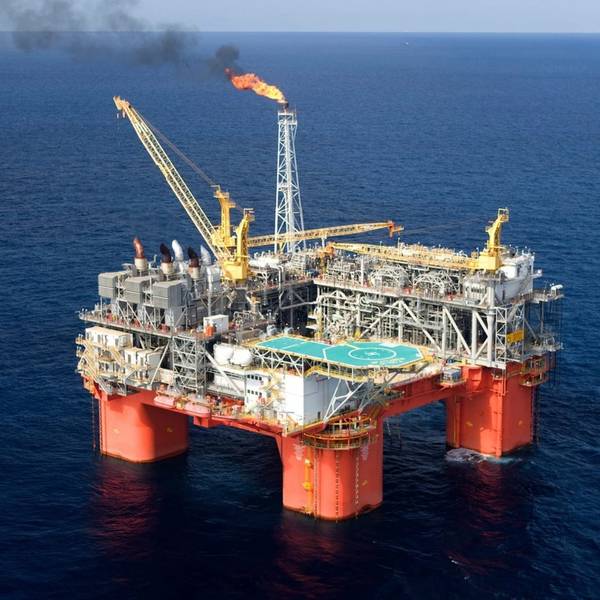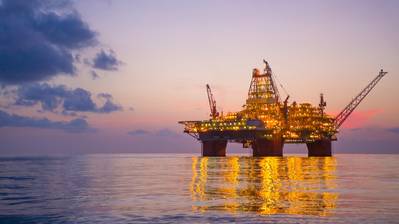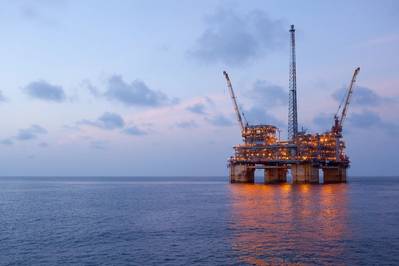
BP announced Tuesday it will move forward with its $1.3 billion Atlantis Phase 3 development after recent breakthroughs in advanced seismic imaging and reservoir characterization revealed an additional 400 million barrels of oil in place at the Gulf of Mexico’s third largest oil field.
The supermajor, which is looking to expand upon its position as the Gulf's top oil producer, also identified an additional 1 billion barrels of oil at the Thunder Horse field, as well as two new discoveries near the Na Kika production facility that could provide further tie-back development opportunities.
“BP’s Gulf of Mexico business is key to our strategy of growing production of advantaged high-margin oil. We are building on our world-class position, upgrading the resources at our fields through technology, productivity and exploration success,” said Bernard Looney, BP’s Upstream chief executive.
“And these fields are still young – only 12 percent of the hydrocarbons in place across our Gulf portfolio have been produced so far. We can see many opportunities for further development, offering the potential to continue to create significant value through the middle of the next decade and beyond,” Looney added.
Atlantis expansion green-lighted
The major Atlantis Phase 3 development will see the construction of a new subsea production system from eight new wells that will be tied into the current platform, 150 miles south of New Orleans. Scheduled to come onstream in 2020, the project is expected to boost production at the platform by an estimated 38,000 barrels of oil equivalent a day (boe/d) gross at its peak, BP said. It will also access the eastern area of the field where the advanced imaging and reservoir characterization identified additional oil in place.
“Atlantis Phase 3 shows how our latest technologies and digital techniques create real value – identifying opportunities, driving efficiencies and enabling the delivery of major projects,” said Starlee Sykes, BP’s regional president for the Gulf of Mexico and Canada. “Developments like this are building an exciting future for our business in the Gulf.”
Thunder Horse resources boosted
BP said advanced technology and reservoir characterization has identified a further 1 billion barrels of oil in place at the Thunder Horse field about 150 miles southeast of New Orleans.
 Thunder Horse platform (Photo: BP)
Thunder Horse platform (Photo: BP)
BP, through sustained investment in seismic acquisition and imaging technology and high-performance computing, has developed proprietary algorithms that enhance a seismic imaging technique known as Full Waveform Inversion (FWI), allowing seismic data that would have previously taken a year to analyze to be processed in a few weeks.
The company said the tech underwent successful field trials at the Mad Dog field, and now further advanced seismic imaging with ocean bottom nodes and BP’s proprietary Wolfspar seismic acquisition source is being planned to better understand the reservoirs at Thunder Horse and Atlantis. Wolfspar uses ultra-low frequencies during seismic surveys, allowing geophysicists to see deeper below salt layers and enabling better planning of where to drill wells.
Discoveries and new potential near Na Kika
In addition, BP revealed two Gulf of Mexico oil discoveries, at the Manuel and Nearly Headless Nick prospects.
The Manuel discovery is located on Mississippi Canyon block 520, east of the BP-operated Na Kika platform about 140 miles southeast of New Orleans. The well encountered oil pay in high-quality Miocene sandstone reservoirs. BP said it expects to develop these reservoirs via subsea tieback to the Na Kika platform. BP’s partner in the Manuel discovery is Shell, which holds a 50 percent working interest.
 Na Kika platform (Photo: BP)
Na Kika platform (Photo: BP)
BP holds a 20.25 percent working interest in the Nearly Headless Nick discovery located on Mississippi Canyon block 387, operated by LLOG. Other partners in the discovery include Kosmos Energy Ltd, and Ridgewood Energy. The well encountered oil pay in high-quality Miocene sandstone reservoirs and is expected to be tied back to the nearby LLOG-operated Delta House semi-submersible production facility about 130 miles southeast of New Orleans.
Growing Gulf production
BP said it has grown net production in the Gulf of Mexico by more than 60 percent over the last five years, rising from less than 200,000 boe/d in 2013 to more than 300,000 boe/d today.
The company plans to grow production to around 400,000 boe/d through the middle of the next decade, supported by recent project startups, including Thunder Horse Northwest and Thunder Horse South expansions and the Thunder Horse Water Injection project, as well as the addition of a second platform (Argos) at the Mad Dog field, which is on budget and on schedule to come online in late 2021.
Future potential developments at BP’s offshore fields in the Gulf include Atlantis Phase 4 and 5, further developments at Thunder Horse, Na Kika subsea tiebacks and Mad Dog field extensions.